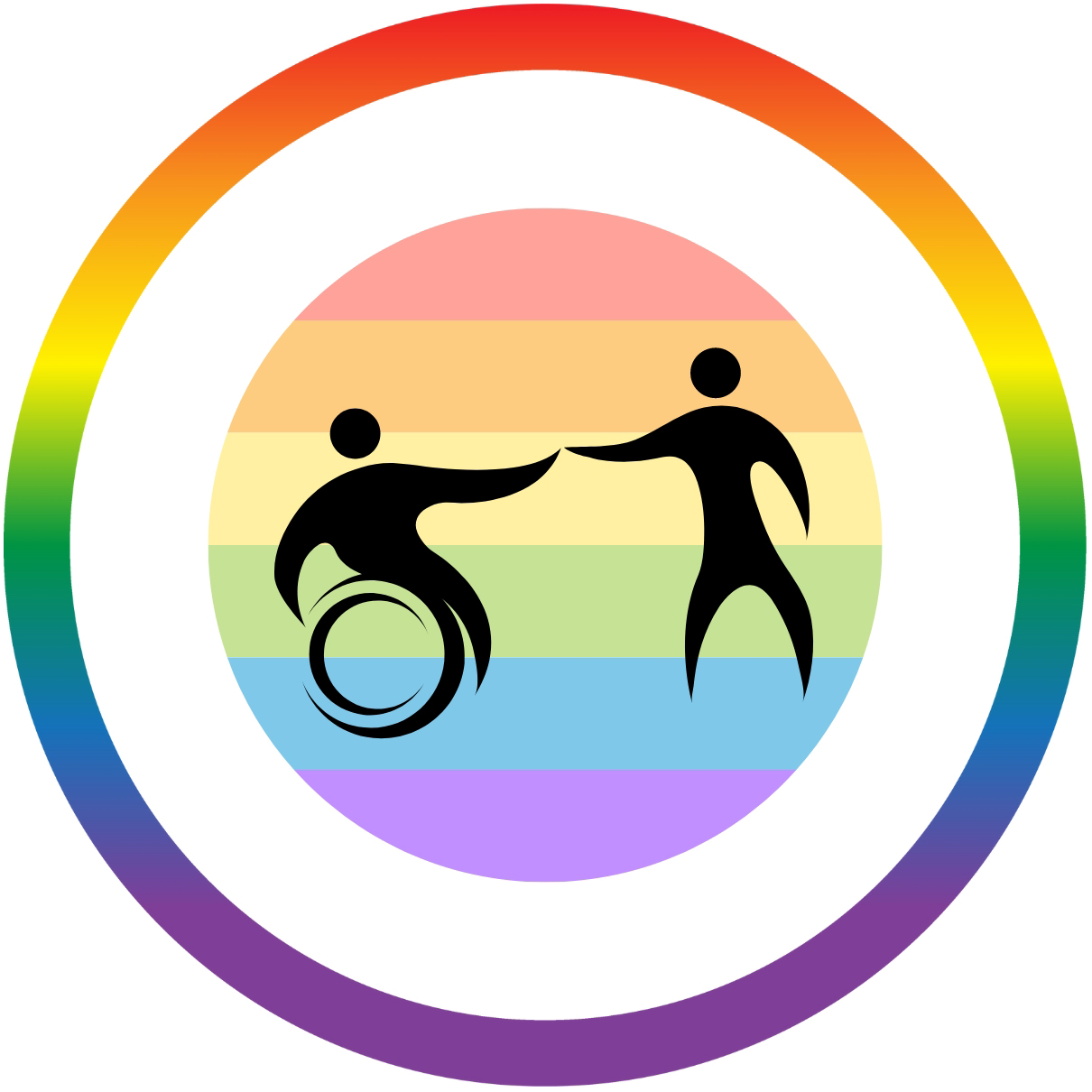Many studies carried out in the past several years have begun to note the correlation between disability and those who identify as queer. Whether this is a cognitive disability, a physical disability, or both, new research in the US shows that disability seems to occur at a higher rate amongst queer people. According to this data analysis from the HRC Foundation, over one-third of LGBTQ+ adults, including over half of the transgender adults in the United States, report having at least one disability.

Copyright Human Rights Campaign Foundation
Visibility
In 2020, the Philadelphia Gay News listed dozens of well-known historical figures who were both queer and disabled, as well as some who are still living. One such modern celebrity is CNN news anchor Anderson Cooper, who is an out gay man with dyslexia. The article states that according to the CDC, 1 in 10 Americans suffer from a “hidden” disability like Cooper’s. Whether these disabilities are truly invisible or whether we as a society simply fail to recognize them as such is the optimal question. For example, glasses and contacts are so normalized that many people do not think of vision impairment as a disability, even though external aids are necessary to function, and millions of people would be at a severe disadvantage without them. Similarly, attention deficit hyperactivity disorder (ADHD) is officially recognized as falling under the purview of the ADA, yet some of those with ADHD do not see themselves as “disabled.” Perhaps this way of thinking is influenced by the long history of stigma associated with disability.
Context
Following other civil rights movements in the 1960s and 1970s, disabled people across the United States lobbied and protested to make their voices heard. In 1973, Section 504 of the Rehabilitation Act was signed into law. This law was the first federal civil rights protection for people with disabilities. However, the language of the legislation was poorly worded, which resulted in conflicting rulings in various lower courts. Section 504 states, “no otherwise qualified handicapped individual in the United States shall solely on the basis of his handicap, be excluded from the participation, be denied the benefits of, or be subjected to discrimination under any program or activity receiving federal financial assistance.” Further regulations were needed to define who was considered disabled, what otherwise qualified meant, what noncompliance with the law looked like, etc.
For the next five years, various organizations strove for specific directives to be drafted and published without success. They wrote strong regulations and sent them to the Department of Health, Education, and Welfare (HEW), but instead of enacting them, the department created a task force to “study” disabled people. This group did not include any disabled individuals, and the study weakened the proposed regulations in scope and enforcement. In early 1977, the American Coalition of Citizens with Disabilities (ACCD) demanded that HEW enact the regulations unchanged by April 4th. However, the ACCD anticipated the department would not comply, so they planned sit-ins at eight regional HEW buildings on April 5th. Unlike many other civil rights movements at the time, the Section 504 protests were led by women, with queer women playing prominent roles. The most notable sit-in, organized by lesbian disability activist Kitty Cone and “the mother” of the disability rights movement Judy Heumann, occurred at the HEW headquarters in San Francisco. Disabled people and allies occupied the building for over 25 days. According to multiple sources, it is the lengthiest sit-in at a federal building to date.
On April 28th, 1977, the proposed regulations were signed into law. However, Section 504 still needed to be firmly enforced and only covered entities that receive federal financial assistance. In 1978, the National Council on the Handicapped was created, an organization of disabled people and their allies. Now called the National Council on Disability (NCD), they act as an advisory body to the HEW on disability matters. In 1986, the NCD drafted the first version of the Americans with Disabilities Act, and the ADA was signed into law in 1990. This legislation prohibits discrimination by any employer, not just those receiving federal aid, and mandates disability accommodations for transportation, commercial businesses, places of lodging, entertainment venues, etc.
The Intersection
However, it wasn’t until the 21st century that protections for queer people began to be added to US legislation. In 2020, the Supreme Court confirmed that Title VII of the Civil Rights Act includes LGBTQ+ individuals, and in 2022, a federal appeals court moved to add gender dysphoria to the ADA as a protected class. Although these developments are favorable, in reality, the law is still not applied equally to LGBTQ+ individuals. This disparity is especially concerning for queer people with disabilities, as there is increasing evidence that disability is more common among the LGBTQ+ community. Therefore, it is crucial to protect their human rights and bodily autonomy.
Path Forward
The solution to this issue requires action from government officials at both the local and federal levels. Transgender people are under attack in many states across the US, and according to research by the HRC Foundation, at least 50% of trans adults are disabled. In addition, states upholding abortion bans are denying millions of citizens their bodily autonomy. The fight for full bodily autonomy and disability rights are unquestionably intertwined. This being the case, the federal government could set an example and provide better protection to vulnerable populations by enshrining into law the rights of each individual to make choices regarding their healthcare.
The passage of marriage equality laws, from Goodridge v. Department of Public Health in Massachusetts in 2004 to the federal legalization of same-sex marriage in 2015 via Obergefell v. Hodges, has had a direct effect on the way that (cisgender, at least) queer people have become more widely recognized, respected, and accepted by the general public. In the continued campaign for equal rights, LGBTQ+ people and their allies should combine their efforts with disabled people in order to achieve the greatest success.

